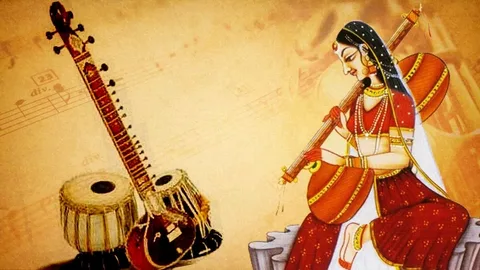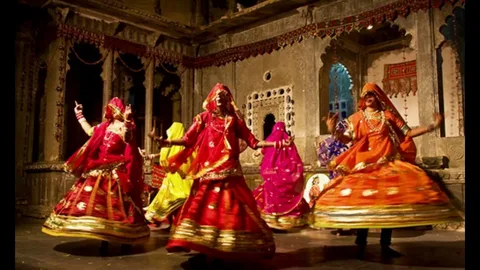Welcome to The Walls New, your go-to destination for discovering the beauty of culture through music and dance! Today, we embark on an exciting journey across the globe to explore the traditional music and dance forms that have shaped communities, storytelling, and celebrations for centuries. Each culture has its own distinct musical traditions and dance styles, and understanding these helps us connect with the diverse world around us. Let’s dive into some of the most captivating traditions from every corner of the earth.
1. Africa: Rhythms of the Earth
Africa’s rich musical and dance heritage is as vast and varied as its many tribes and nations. The continent is the birthplace of complex rhythms and vibrant sounds that echo through its history.

- Traditional Music: African music is often centered around percussion, with drums like the djembe, dunun, and balafon creating intricate rhythms that form the backbone of many musical styles. The melodies are built around call-and-response patterns, where the leader calls and the group responds in harmony. Instruments like the mbira (thumb piano) and kora (a stringed instrument) are also integral to many African cultures.
- Traditional Dance: Dance in Africa is deeply intertwined with music and spirituality. Agbekor, a dance from the Ewe people of Ghana, is a powerful and energetic performance often performed to honor ancestors. The Adumu, or Maasai “jumping dance,” is another iconic African dance, showcasing strength and agility while celebrating the Maasai people’s connection to their heritage.
2. India: Spiritual Rhythms and Sacred Movements
India’s cultural diversity is reflected in its rich musical traditions and classical dance forms that tell stories of gods, kings, and everyday life.
- Traditional Music: Indian classical music is based on ragas (melodic scales) and talas (rhythmic cycles), creating a deep connection between sound and spirituality. Instruments such as the sitar, tabla, and flute are central to Indian music, with performances often accompanied by singing or instrumental solos.
- Traditional Dance: Indian classical dance forms like Bharatanatyam, Kathak, and Kathakali combine intricate footwork, expressive gestures, and facial expressions to narrate myths and religious stories. Each dance form is unique, yet all emphasize rhythm, grace, and storytelling, providing a visual and spiritual experience for the audience.
3. Latin America: Passion and EnergyLatin American music and dance are known for their passion, rhythm, and vibrant celebrations. The region’s music is deeply rooted in a mix of indigenous, African, and European influences, creating diverse and exciting traditions.
- Traditional Music: Latin American music is as dynamic as the landscapes of the region, with genres like salsa, samba, and bossa nova reigning supreme. Instruments such as the guitar, maracas, trumpet, and bongos infuse the music with lively beats, often inviting listeners to move with the rhythm.
- Traditional Dance: Salsa (originating in Cuba) is a high-energy, partner dance celebrated worldwide, known for its fast footwork and sensual movements. Tango, born in Argentina, is an intimate, dramatic dance that reflects the passion of its birthplace. Whether it’s the joyful merengue from the Dominican Republic or the sensual samba of Brazil, Latin American dances are all about expression, connection, and joy.
4. Asia: Graceful Movements and Sacred Sounds
Asia’s traditional music and dance forms are closely tied to spiritual rituals, historical narratives, and national identity. From the vibrant dances of India to the gentle melodies of Japan, Asia offers a rich tapestry of traditions.
- Traditional Music: In Japan, gagaku (court music) and shamisen music capture the serenity and beauty of the nation’s cultural heritage. In China, the haunting sounds of the guqin and the dramatic operatic tones of Peking opera reflect the depth of Chinese music. Southeast Asia features the gamelan orchestra from Indonesia, where bronze instruments create intricate melodies that accompany temple dances and ceremonies.
- Traditional Dance: Kabuki and Noh in Japan are iconic traditional performance arts that combine dance, music, and theater to narrate ancient tales. The Barong Dance from Bali and the traditional dances of Thailand and Cambodia, such as Khon and Apsara, tell stories of gods, kings, and mythical creatures through intricate hand movements and expressive body language.
5. Europe: Folk Rhythms and Cultural Pride
Europe’s traditional music and dance are incredibly diverse, reflecting the continent’s historical and cultural evolution. Each region has its own unique forms of expression, from the haunting melodies of Eastern Europe to the energetic folk dances of the British Isles.
- Traditional Music: In Ireland, Celtic music is famous for its lively jigs and reels played on instruments like the fiddle, tin whistle, and bodhran. Eastern European traditions include the expressive music of the gypsies, with violins and accordions often featured. In the Balkans, klezmer music has deep Jewish roots and is filled with lively melodies and complex rhythms.
- Traditional Dance: European folk dances such as Irish stepdance, Greek sirtaki, and Spanish flamenco are beloved for their intricate footwork, rhythmic precision, and passionate expression. Polka (from Central Europe) and waltz (from Austria and Germany) are also internationally recognized, inviting participants to move in sync with the music’s rhythm and mood.
6. North America: From Roots to Modernity
North America’s traditional music and dance have evolved through a blend of Indigenous, African, and European influences, creating genres like blues, jazz, and country that have shaped modern music.
- Traditional Music: Blues, jazz, and bluegrass music have their origins in the African American community, with the use of instruments like the banjo, guitar, and harmonica creating the distinct sound of these genres. Native American music, with its drumming, flutes, and chanting, connects to the land and spirits, carrying deep cultural meaning.
- Traditional Dance: Native American dances, such as those performed at powwows, are vibrant, spiritual expressions of culture and community. In the South, square dancing and country line dancing are popular social dances, with everyone coming together in rhythm to celebrate life and togetherness.
7. Oceania: Sacred Sounds and Dance of the Islands
The music and dance of Oceania reflect the diverse cultures of the Pacific Islands, from the rhythmic drumming of Hawaii to the ceremonial dances of New Zealand’s Māori people.
- Traditional Music: The didgeridoo of Australia is one of the most iconic instruments in the region, creating a deep, resonating sound that has been played for thousands of years. In Hawaii, the ukulele and slack-key guitar bring the island’s tropical sound to life, while the panpipes of Papua New Guinea create haunting melodies that echo through the forests and mountains.
- Traditional Dance: Hula dance, from Hawaii, is one of the most famous traditional dances, telling stories through graceful hand movements and rhythmic footwork. In New Zealand, the Haka, a warrior dance performed by the Māori people, is known for its powerful movements and chanting, used to prepare for battle or celebrate victories.
Conclusion
Traditional music and dance are powerful expressions of cultural identity, passed down through generations to tell stories, celebrate life, and connect communities. From the vibrant rhythms of Africa to the elegant movements of Asia, these artistic traditions form the backbone of many societies, preserving history and culture for future generations.
At The Walls New, we celebrate the diverse cultures that make our world so unique. By exploring traditional music and dance, we gain a deeper appreciation for the stories and rhythms that unite us all. Stay tuned for more cultural explorations and artistic journeys from around the world!




